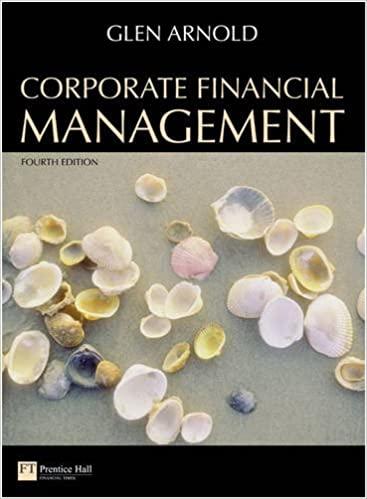Answered step by step
Verified Expert Solution
Question
1 Approved Answer
Accounting... Capital structure theories refer to the various principles and models that explain the optimal mix of debt and equity financing for a company. These
Accounting... Capital structure theories refer to the various principles and models that explain the optimal mix of debt and equity financing for a company. These theories aim to determine the ideal capital structure that maximizes the value of the firm while minimizing the cost of capital.
One prominent theory in capital structure is the ModiglianiMiller theorem M&M This theorem, proposed by economists Franco Modigliani and Merton Miller, suggests that in a perfect market without taxes and transaction costs, the value of a company is based on its future earnings and is independent of its capital structure. According to M&M investors can create their desired capital structure by adjusting their personal borrowing and lending, known as homemade leverage.
However, in realworld scenarios where taxes, bankruptcy costs, and agency issues exist, the M&M theorem may not hold true. As a result, several other theories and models have been developed to provide insights into the optimal capital structure decisionmaking process. Some of these theories include:
Tradeoff Theory: This theory suggests that companies need to strike a balance between the benefits and costs of debt financing. Debt offers tax advantages due to interest deductibility but increases the risk of financial distress and bankruptcy costs. The tradeoff theory implies that companies should determine an optimal level of debt that maximizes the value of the firm.
Pecking Order Theory: Proposed by Myers and Majluf, this theory states that companies prefer internal financing retained earnings over external financing debt or equity due to information asymmetry between managers and investors. According to this theory, companies will only resort to external financing when internal funds are insufficient.
Agency Cost Theory: This theory focuses on the conflicts of interest between shareholders and managers. It suggests that the capital structure decision is influenced by the need to align the interests of shareholders and managers. Debt financing can help reduce agency costs by imposing discipline on managers and aligning their interests with those of shareholders.
Signaling Theory: This theory suggests that the capital structure choices of a company can send signals to investors about the firm's future prospects. For example, issuing equity may signal that management believes the stock is overvalued, while issuing debt may signal confidence in the company's ability to meet its obligations. The signaling theory emphasizes the importance of managing the perception of the market through capital structure decisions.
Market Timing Theory: This theory posits that companies time their capital structure decisions based on market conditions. Companies may issue equity when stock prices are high and repurchase shares or issue debt when interest rates are low. The market timing theory implies that external factors and market conditions play a significant role in determining the capital structure.
Fill in the blank:
The ModiglianiMiller theorem states that the value of a company is based on its future earnings while its capital structure is
A Irrelevant B Constant C Dynamic D Flexible
Step by Step Solution
There are 3 Steps involved in it
Step: 1

Get Instant Access to Expert-Tailored Solutions
See step-by-step solutions with expert insights and AI powered tools for academic success
Step: 2

Step: 3

Ace Your Homework with AI
Get the answers you need in no time with our AI-driven, step-by-step assistance
Get Started


